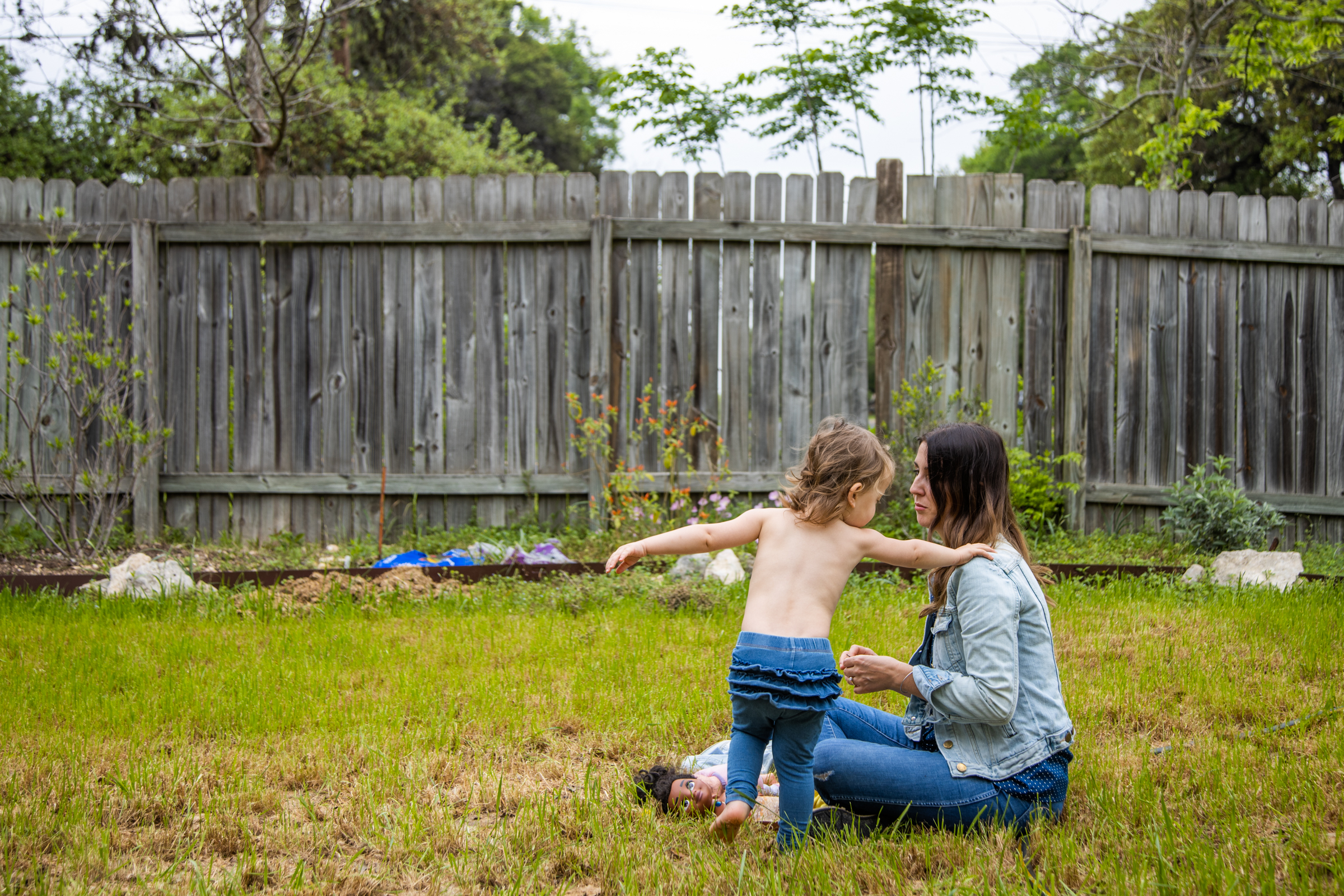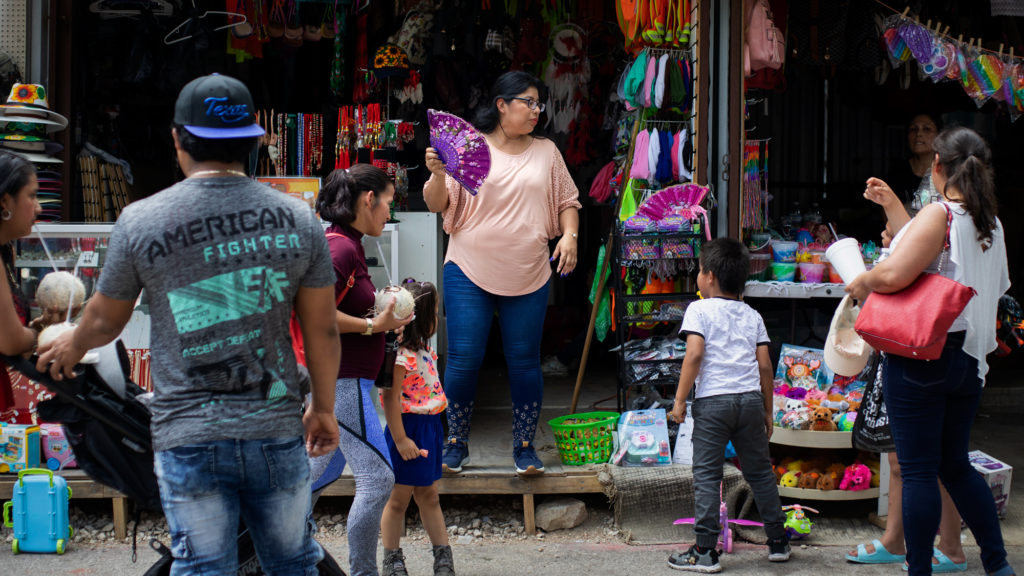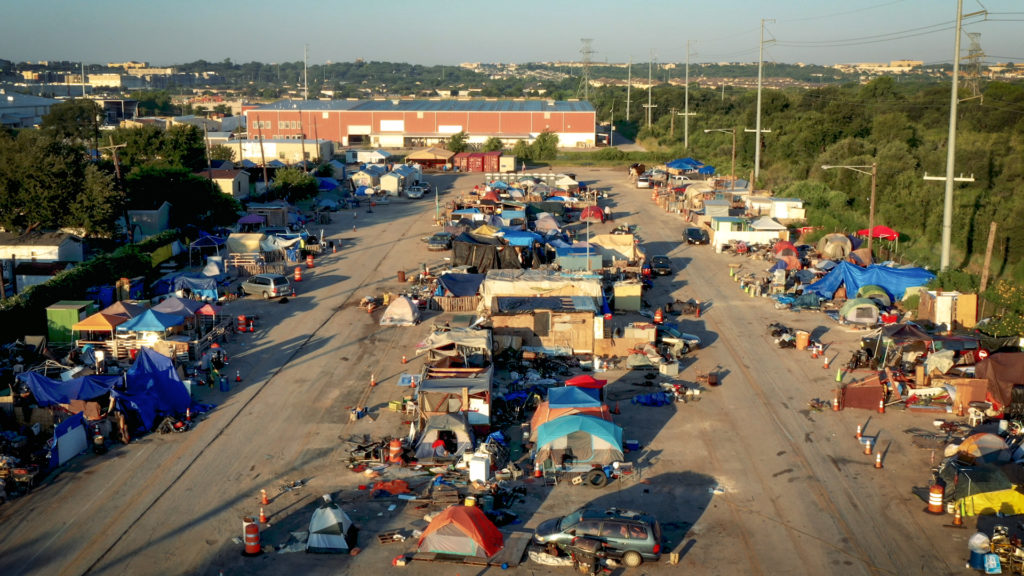** Note to Readers: The name of Andrea’s employer is intentionally excluded from this profile in observance of the company’s media restrictions. **
As a nurse of 13 years, and mom to a two-year-old daughter, Andrea Dunn has learned, until recently, how to balance a career caring for others with a devotion to caring for her family.
But as the number of COVID-19 infections grows in Travis County — and across the country — Andrea suddenly faces a difficult choice. Just as the coronavirus crept closer to home, Andrea learned she’s newly pregnant. Now she must decide whether to continue in the profession she’s known for more than a decade, at a time when her help is needed most, or recuse herself and protect her growing family.
“I might be stupid for not pulling out now,” Andrea says. “I don’t know. I might regret going in tomorrow. Things can change at the drop of a hat, and I could regret it. It’s too hard to know. It’s really a crappy position to be in.”
Andrea’s doctor suggested she take a leave of absence from the large hospital where she works in Austin, Texas, but Andrea is reluctant to step away and leave her teammates short a nurse.
“My coworkers always have my back,” Andrea says. “Every single one of them. We think what we’ve gone through already has been hard, and it has been. But we’re gonna be up against the hardest times, and I feel like I’m cowering in a corner and saying, ‘Good luck.’”
Andrea is still working for now, and she appreciates the support she’s been given by her manager. She was recently taken off certain assignments that put her more at risk. But Andrea also wonders how much difference it makes if, or when, her colleagues become exposed to COVID-19 in the weeks ahead.
For several shifts, Andrea was tasked with managing the hospital’s supply closet of personal protective equipment (PPE), but she hated telling colleagues she couldn’t provide them with everything they requested. Andrea expects to be moved to a postpartum rotation, which feels somewhat safer. But again, what if an asymptomatic mother comes in for delivery? And with hospital staff moving throughout the building, is anywhere safe?

Andrea Dunn and her two-year-old daughter in their backyard, playing with dolls and dandelions. When Andrea isn’t working as a nurse at an Austin hospital, she’s at home with her husband and daughter, looking for ways to keep their little girl occupied and entertained. Now that Andrea knows she’s pregnant with her second child, she’s also contemplating what the future holds for her family as the COVID virus continues to spread through Texas. [Photo by Kelly West]
As Andrea wrestles with her decision, she considers how little is known about the effects of COVID-19 on pregnant women and fetal development. She cites instances of miscarriage among pregnant SARS patients following the outbreak of that virus in 2003. And she points to the growing anxiety around personal protective equipment in the health-care facility where she works.
Before COVID-19 arrived, nurses changed their masks after seeing each patient. Now nurses are given a single mask to use each day, when they might see two to six patients on a single rotation. Fearing a coming shortage, Andrea posted on NextDoor asking if anyone in the area had extra PPE to spare.
“It’s crazy,” Andrea says. “I’ve never done that before. And when things are depleted, as we’re suspecting they will be, then what?”
Andrea thinks her hospital has the equipment it needs, for now, and the facility is relatively quiet for the moment, since elective surgeries have been cancelled. But this also means revenues are falling, and some nurses are seeing their shifts cut. But Andrea says leaders at the hospital are working tirelessly to conserve resources and protect remaining staff.
Meanwhile, each day brings new confirmed cases and deaths. As of April 5, Travis County reported 484 confirmed COVID-19 cases and six of 138 deaths across the state.
The peak for Central Texas could be several weeks away, but Andrea sees what’s happening to healthcare workers in New York, and she’s hearing from other nurses across the country in a Facebook group she follows. Nurses everywhere are crying out for more resources, more protective equipment, and more support.
For the moment, it’s a waiting game for Andrea and her colleagues. “It’s not like we want to get the show on the road, but we want to see what comes,” she says. “We keep anticipating what New York is going through, what Italy is still going through. We’re just waiting, and it’s not like our national leaders are stepping up and doing what’s supposed to be done.”
As for the decision she faces, it’s moment to moment, or day to day. Andrea and her husband planned for this baby, but says if she’d known what was coming, they would have planned differently.
Just last week, Andrea went to her obstetrician’s office for an ultrasound. The sonographer told her it was unlikely she would hear the baby’s heartbeat this early in the pregnancy. Andrea even wondered for a moment if the baby was really meant to be.
But then came the tiny boom-boom from the machine. “I just started crying. The heartbeat was there, and as soon as I saw the flicker of the heartbeat, I knew — this baby is strong and it wants me to know it’s gonna be okay and we’re gonna be okay.”
Whatever she decides to do, Andrea hopes this crisis brings change to the industry she’s chosen for her career. “I hope we can get to the other side of this, and I hope at the end of all this — whether I fight the good fight or not — I hope that health care changes drastically and people understand the importance of what we do and how deeply we care and how important we are. Because we’re essential. It can’t go on like this.”



